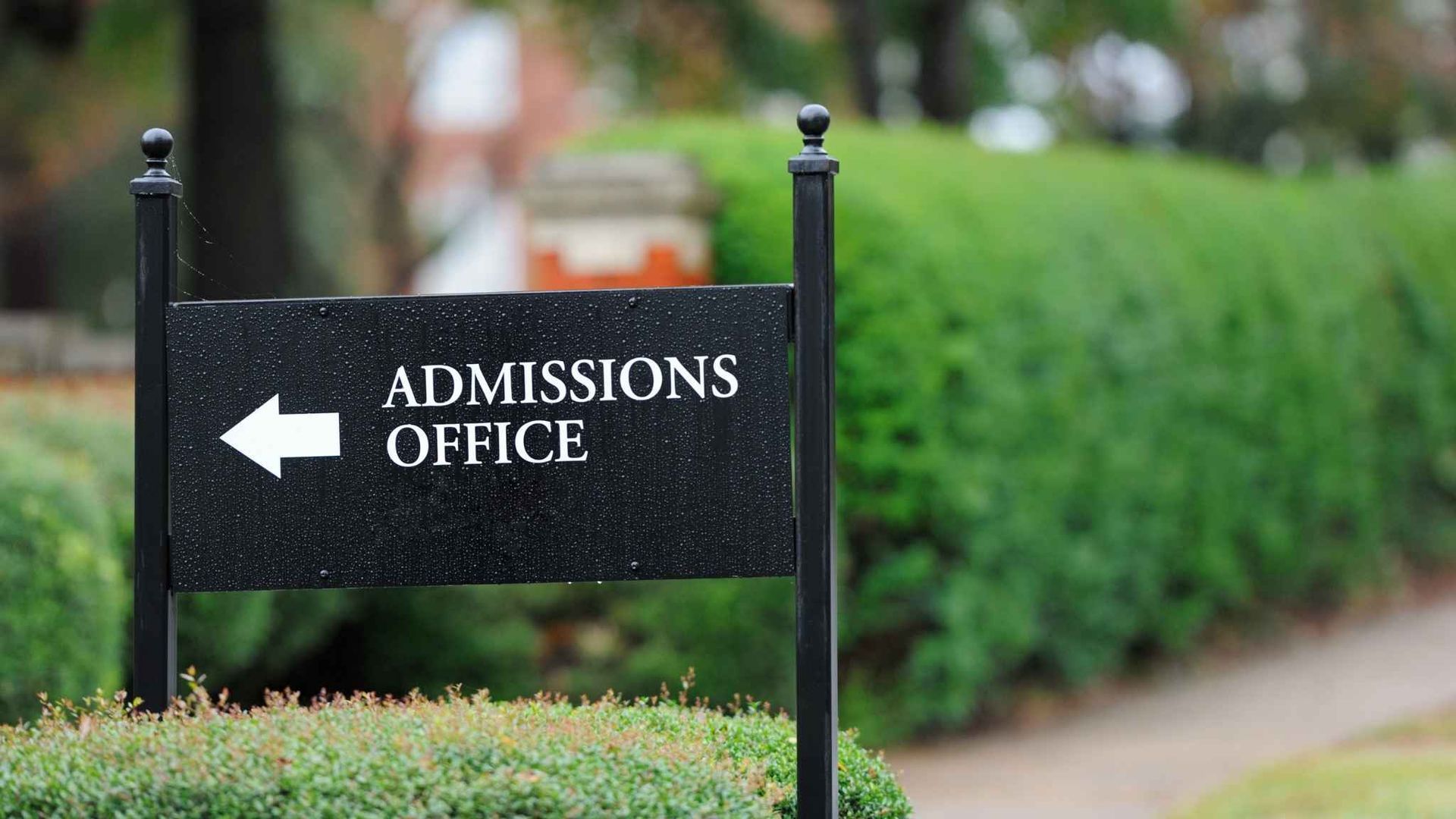College Athletic Recruiting: A Guide for Parents and Students
Is being a student-athlete really worth the intense commitment, the early mornings, and the long hours?
It’s a question many high school athletes—and their parents—find themselves asking as they weigh the benefits of competing in college sports against the demands of balancing athletics with academics.
For some, the answer seems clear: college athletics can be a powerful pathway to admissions, especially at competitive schools. However, figuring out how athletic recruiting works—and why it might benefit you—isn’t always straightforward.
The athletic recruiting process can be a maze of timelines, expectations, and NCAA rules, making it hard to know where to start or what truly matters.
If you're a student hoping to leverage your athletic abilities to boost your college prospects or a parent wondering if the investment of time, energy, and resources will pay off, you’re not alone.
For insight on whether pursuing sports at the college level could be the key to opening doors in admissions, read on—this guide will give you the clarity and direction you need.
Why Pursue College Athletics?
College athletics is a serious commitment, so why do so many students choose to go down this path?
For some, it’s about taking their passion for sports to the next level. For others, it’s a way to stand out in the competitive world of college admissions.
Here’s a closer look at the reasons why pursuing college athletics might be the right choice for you:
1. Passion for the Game and Competition at a Higher Level
If you genuinely enjoy your sport and want to see how far you can go, college athletics can offer an exciting challenge. Competing at the collegiate level means facing skilled players, pushing your limits, and being part of a team that shares your dedication. It’s an opportunity to grow as an athlete and a person, developing skills like discipline, resilience, and teamwork that you’ll carry with you for life.
If you’re someone who thrives on competition and loves the thrill of the game, college athletics can be a rewarding way to continue doing what you love.
2. A Powerful Pathway to College Admissions
For student-athletes, sports can sometimes be the key to opening doors in college admissions. Many colleges actively recruit talented athletes, and being skilled in a sport can give you an advantage in getting accepted to schools that are a good fit for you academically and athletically.
But keep in mind that balancing academics and athletics is essential—most schools have academic standards you’ll need to meet to stay eligible.
It’s also worth considering that college is a time for growth and exploration, and not all student-athletes stick with their sport for all four years. Some decide to step away from sports to focus on academics, internships, or other interests. Pursuing college athletics can be a great option if you’re ready for the commitment now but also open to adapting as your college journey progresses.
A Step-by-Step Guide to College Athletic Recruiting

Photo by Guduru Ajay bhargav from Pexels
The athletic recruiting process can feel like a whirlwind, but breaking it down year by year can make it easier to navigate.
Here’s a step-by-step guide to help student-athletes stay on track and make the most of each stage.
For Freshman & Sophomore Year
Step 1: Speak with Your Coach
Your coach can be one of your greatest resources during the recruiting process. They’ve seen your development as an athlete and understand the demands of college sports.
Start an open conversation with them about your goals and ask for feedback on where you might realistically fit into the college athletics landscape. Your coach can also help you set improvement goals and give advice on training.
Register with the NCAA
Getting registered with the NCAA early on is essential, especially if you’re aiming for Division I or II. This registration will set up your eligibility and keep you on track with the necessary requirements for college sports.
Step 2: Start Posting Your Athletic Stats
Creating a strong online presence starts with posting your athletic stats, but less is more.
Stick to a few reputable platforms like SwimCloud, MaxPreps, or Hudl, and focus on stats that matter for your sport (e.g., times, height, and position-specific skills). Ask your coach for guidance on where to post and what metrics to highlight.
Avoid creating too many social media profiles—college coaches often prefer simplicity and may not follow every platform.
Step 3: Create Highlight Reels
A good highlight reel is a powerful recruiting tool. Use footage from actual games or meets (not practice) to showcase your skills, decision-making, and athleticism.
Keep it concise—2 to 3 minutes is ideal—and make sure it’s high quality with clear context (e.g., point out where you are on the field or court). Update your reel regularly as your performance improves.
For Sophomore Year
Step 4: Create a Wide List of College Targets
Start casting a wide net by building a list of potential college programs that interest you, and include a few you might not have initially considered.
At this stage, keep an open mind; your preferences may change as you progress through high school. Your coach and advisors can help you refine this list.
Step 5: Create a Resume / Player Profile
This is your “athlete resume” that coaches will refer to, so make it count. Keep it to one page, including a professional photo, relevant stats, academic achievements, and contact details for your coach.
If you have PSAT/SAT/ACT scores, include them here. List any awards, clubs, or activities that highlight your well-roundedness. This profile will be attached to emails and shared with coaches.

Photo from Pixabay
For Sophomore Year Spring
Step 6: Prepare Emails to Coaches
Now, it’s time to start reaching out. When contacting coaches, keep emails short and personalized. Include:
- Your stats, highlight reel link (YouTube works best), and reasons for your interest in their program.
- Attach your resume/player profile, unofficial transcript, and class schedule for junior year.
Tip: Email the entire coaching staff, not just the head coach. Coaches’ emails are typically found on the athletics page of the school’s website. Don’t forget to complete each school’s recruiting questionnaire (often required by programs).
NCAA rules prevent coaches from responding to sophomores before June 15. Be patient—some responses may take months, and it’s often the assistant coach who replies first.
Send monthly updates to keep coaches informed of any recent milestones, like improved times, upcoming meets, or awards.
Junior Year – June 15 and Onward
Step 7: The “Dating Game” Begins
On June 15, coaches are officially allowed to respond to emails and reach out directly via phone or email. Remember, coaches are evaluating multiple athletes, so it’s essential to stay in touch, keep them updated, and show continued interest.
Even if a coach doesn’t respond right away, don’t be discouraged. Keep sending updates, as they may want to see how you progress over time.
Junior Year to Senior Year Fall
Step 8: On-Campus Visits
Visiting campuses can be an exciting step in the process. There are two types of visits:
- Official Visits: Schools cover expenses for lodging, meals, and transportation. You’ll have the opportunity to tour facilities, meet the team, and connect with coaches. NCAA allows five official visits.
- Unofficial Visits: Unlimited but self-funded, unofficial visits still allow you to experience the campus atmosphere and meet coaches informally. Division III schools only offer unofficial visits.
Step 9: The Commitment
Towards the end of junior year or the beginning of senior year, coaches may indicate they’d like you to commit to their program. This is often a verbal commitment, which is non-binding, so it’s wise to keep it private until you’re officially admitted or signed.
Some schools, like Ivy League programs, may request Early Decision applications for recruited athletes. If you’re certain about a program, applying early can secure your spot, while others may ask you to go through the regular admissions process.
Important Factors to Keep in Mind

Photo by Quyn Phạm from Pexels
Financial Aid
If you need financial aid, be upfront with coaches. Financial aid needs can affect recruiting decisions, and honesty helps avoid financial stress later.
NCAA Roster and Scholarship Changes
New NCAA rules have capped rosters and adjusted scholarship limits, especially in Division I. These changes aim to distribute scholarships more evenly and prevent schools from over-recruiting just to keep athletes from other programs.
Academic Standards
High-academic schools, like Ivy League colleges, have strict academic requirements. Coaches will check your academic eligibility through a pre-read with admissions, often using a combined SAT/ACT and GPA score. Make sure your academics meet these standards to stay eligible.
Take Charge of Your College Athletic Future with Confidence
Choosing to pursue college athletics is a big step—one that goes beyond simply making a team. It’s about finding a college that fits both your athletic and academic goals, where you can grow, compete, and thrive. By understanding each step of the recruiting process, from building a standout profile to reaching out to coaches, you’re already on the path to a successful college journey.
At StrivePath, we know how challenging this process can feel, but you don’t have to do it alone. If you’re looking for personalized guidance or have questions about finding the best college fit for you as a student-athlete, we’re here to help. Reach out to us at contact@mystrivepath.com or call us at 925-466-3606.
We’re excited to support you in finding a college experience that’s as rewarding on the field as it is in the classroom.










